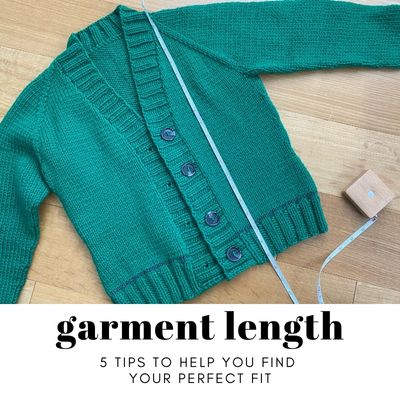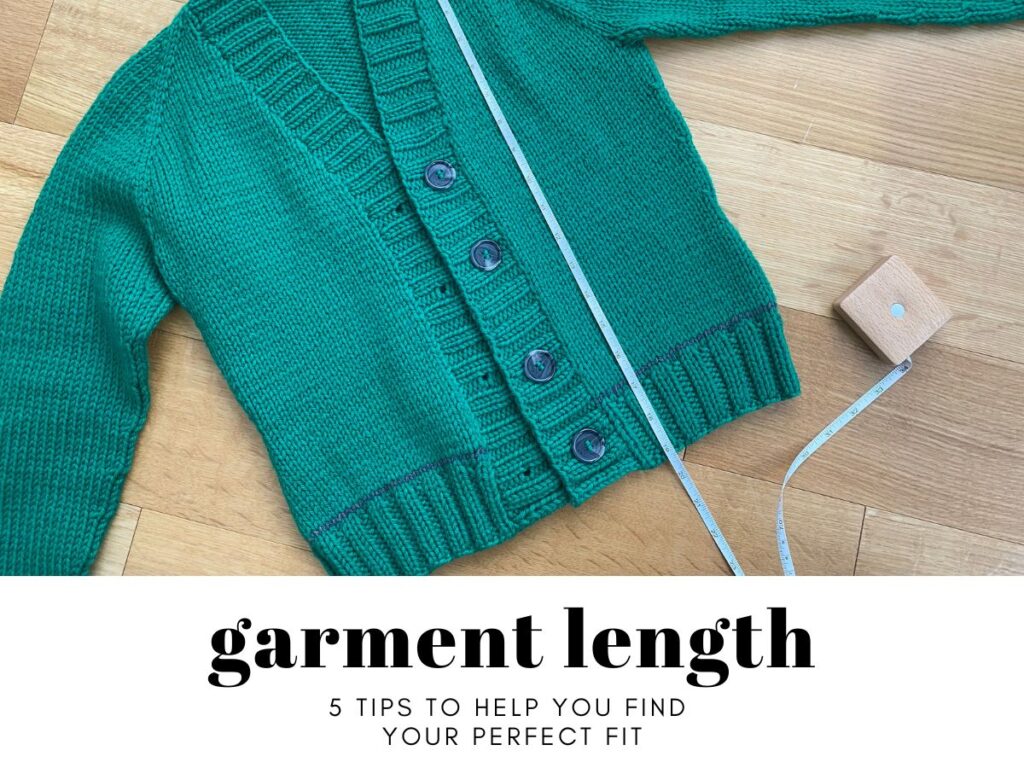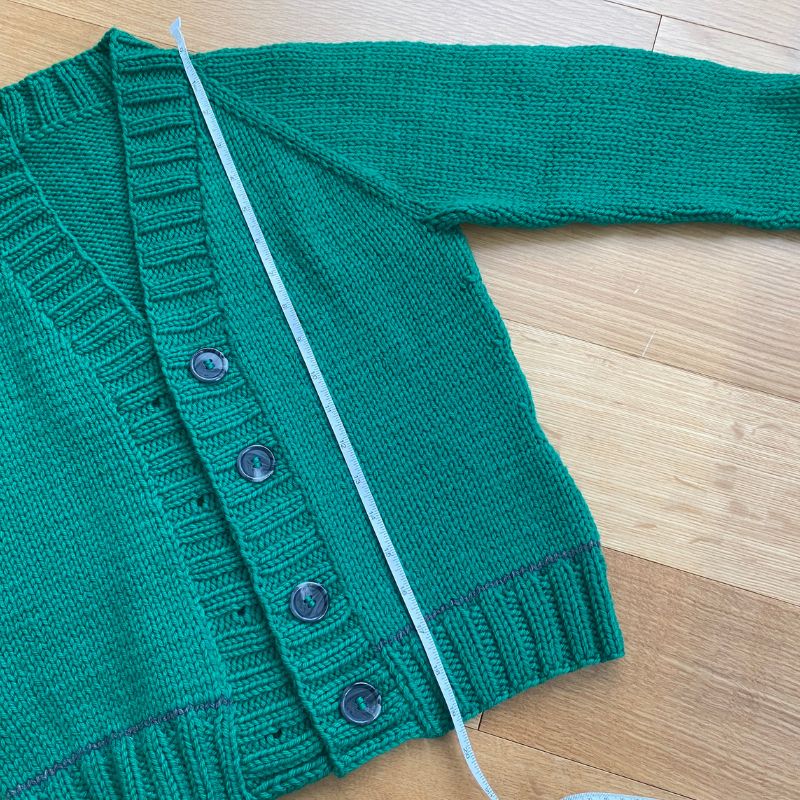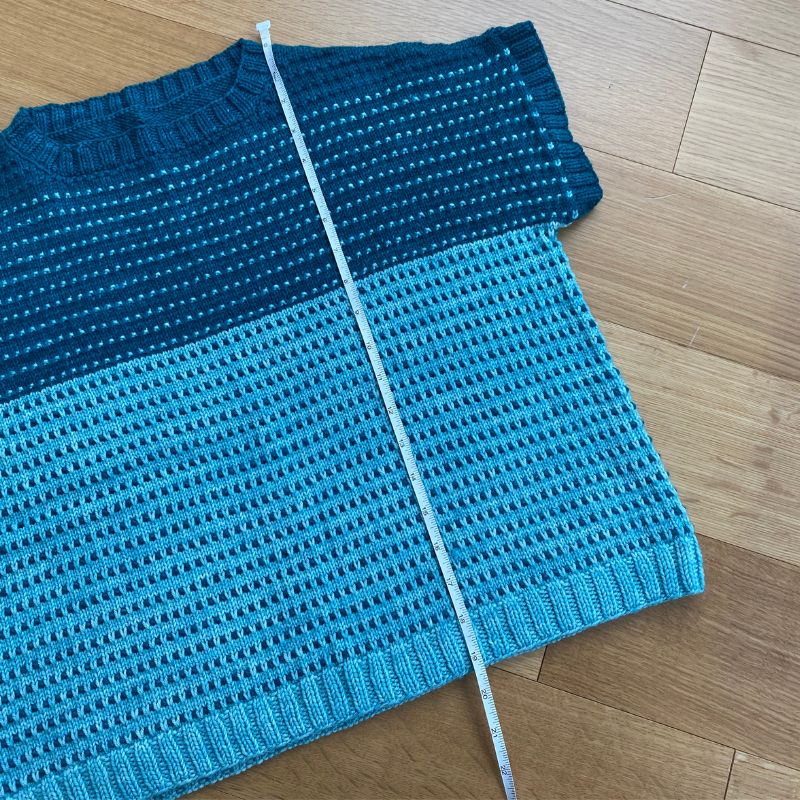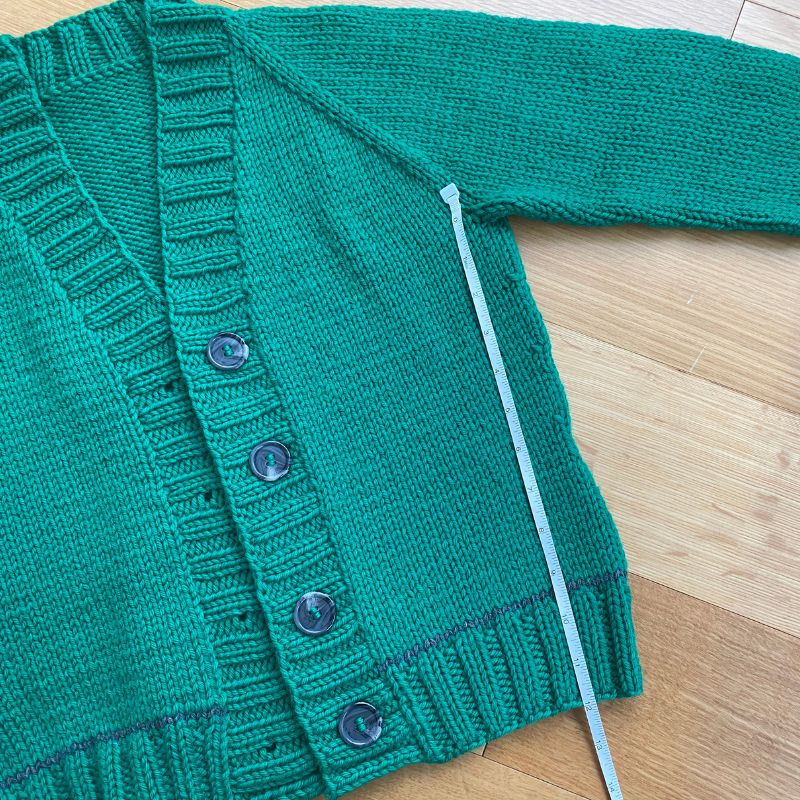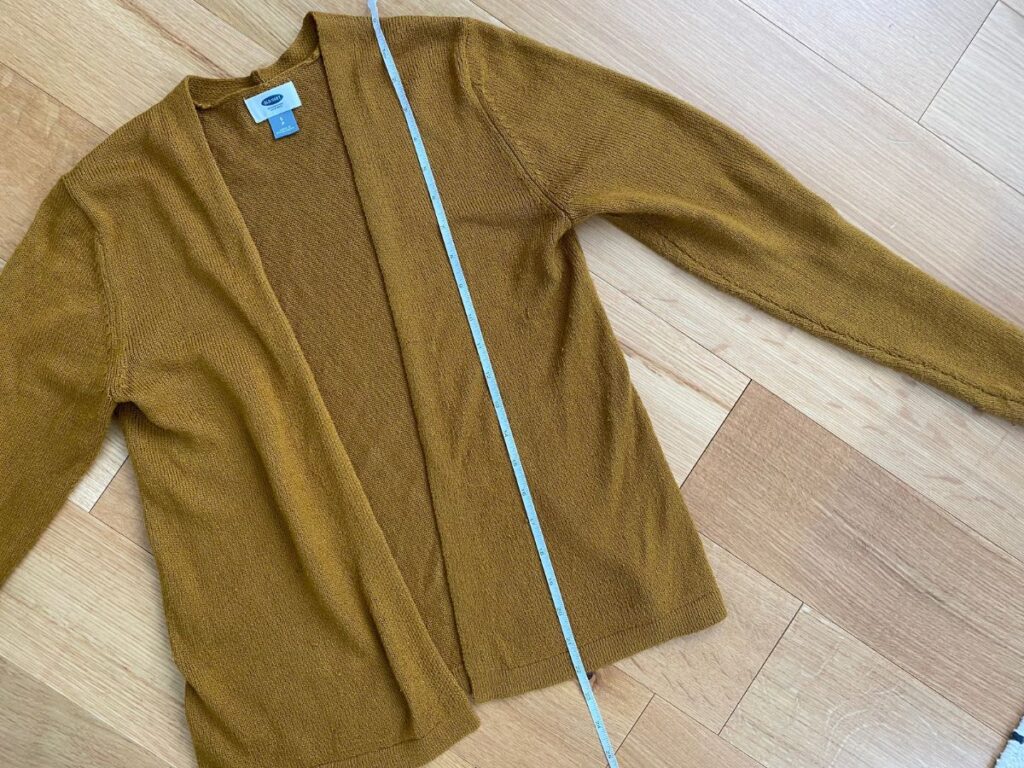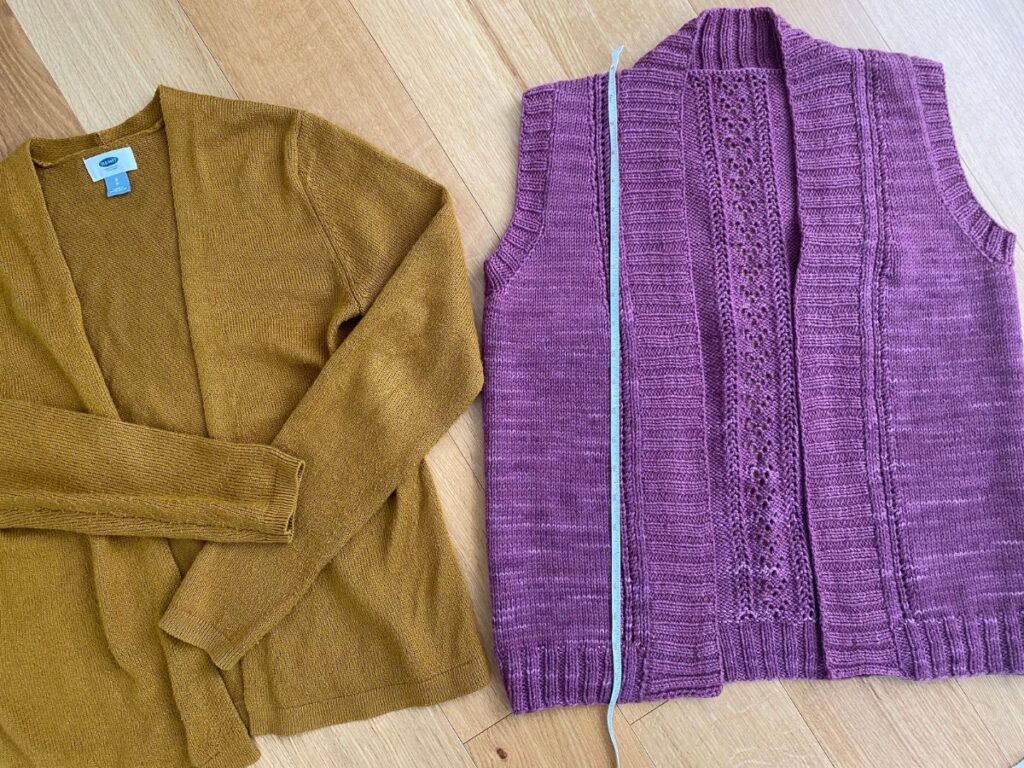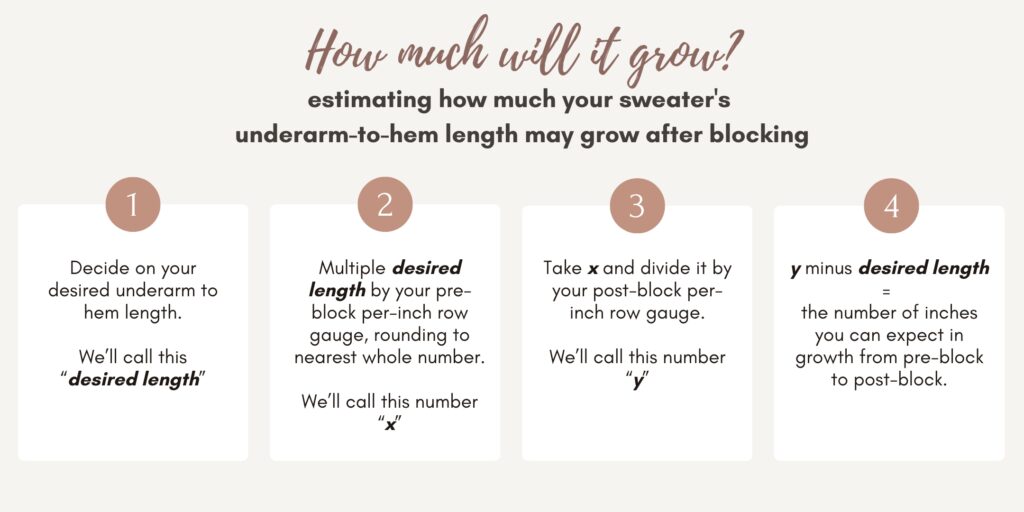One of the most common pattern adjustments you can make when knitting a garment is adjusting the length. In many of my patterns, whether they are bottom-up or top-down, when working the underarm-to-hem length I often instruct to knit a certain amount of inches “or your desired underarm to hem length.” But how do you decide what this is for you?
In top-down patterns it’s a little easier because you’ve already knit your shoulder-to-underarm length, so it’s easier to judge where you want your hemline to be. But bottom-up garments can be trickier because you’ll need to make the underarm-to-hem length decision before you work the “underarm-to-shoulder” length. In either case though, here are some tips you might find helpful the next time you are trying to decide on your perfect length!
Tip #1: Keep in mind that your “underarm” may not always fall in the same spot
Often when we think about underarm-to-hem length we think it’s the length that starts (or ends) at our actual underarm (i.e, armpit). But the underarm of your garment is usually at further below your actual underarm/armpit, and how much below depends on the construction style and overall fit. Below are 2 examples to show how different it can be depending on the garment – my Stevie top (in gray) is a raglan-style and has a closer fit at the underarm whereas my Low-Key vest has a more generous fit at the underarm (it’s much further down from my actual armpit):
As you can see from the examples above, it’s important to know what your shoulder-to-underarm length is in order to know what your underarm-to-hem length should be. Because your shoulder-to-hem length is what decides how close or far your garment underarm is from your actual underarm/armpit.
Here is a great example to illustrate this point further…
Below are pictures of my Audrey’s Cardigan and Summer Soundtrack Pullover. And when measured from the top of the shoulder downwards, they both measure just about 19.25″
But look at the underarm-to-hem length of each – Audrey’s Cardigan measures 12″ from underarm-to-hem while Summer Soundtrack measures 1″ shorter at 11″.
So obviously Audrey’s Cardigan’s underarm falls higher up (closer to the armpit) then Summer Soundtrack. And this will often be the case when it comes to the difference between a raglan-style construction and a drop-shoulder-style. This brings us to tip #2…
Tip #2: Determine your desired shoulder-to-hem length in order to know your underarm-to-hem length
Your overall garment length includes the top of your sweater – the area consisting of the shoulder down to the underarm. And as we learned in tip #1, even if 2 garments share the exact same overall length, they can have different shoulder-to-underarm lengths due to garment construction or style. So follow these steps when trying to determine your ideal underarm-to-hem length:
- Step 1: Determine what overall length you want by measuring from the top of your shoulder, near your neck (or back of neck if you have someone to help you) all the way down to where you want your garment to hit on the bottom. Write this number down.
- Step 2: Look at the pattern schematic (check out this blog post if you’re new to schematics) and find the measurement for your size for the shoulder-to-underarm length. (note: for drop-shoulder garments, this may mean adding the shoulder depth and armhole depth together to get the full shoulder-to-underarm length).
- Step 3: Subtract the measurement of step 2 from the measurement of step 1 and you’ll get your desired underarm-to-hem length.
Note: In the above, the underarm-to-hem measurement is the variable, i.e, we’re not changing the pattern’s shoulder-to-underarm length. The reason for this is because often there is complicated armhole or shoulder shaping involved and so it’s less straight-forward to adjust this area. Whereas the body, even if there is some body-shaping, has much more flexiblility with adding or taking away length.
Tip #3: Measure the overall length of garments in your closet to learn your preferred length fit
Similar to suggestions I’ve made in other blog posts about determining your preferred fit, looking in your closet for clues about how you like to wear your clothes can be so helpful. Of course many of our store-bought tops have varying lengths depending on the cut and style, but this is a great way to learn what type of lengths you may prefer for different styles.
For example, when I was determining the length for my Lilac Trail Vest, I turned to an old cardigan I purchased from Old Navy years ago. I knew that this cardigan hit at my hips at the same spot that I wanted my Lilac Trail to hit, so using its’ overall length as a starting point was really helpful. As you can see, both measure around 22″ from shoulder to hem (despite having different underarm-to-hem lengths).
Tip #4: Think about how you might style the garment
How do you envision wearing this garment? With leggings, high-waisted chinos, bootcut jeans, or over a dress perhaps? I always like to envision how I might style a new garment because often it will help me decide what kind of overall length would work best. When you’re creating an outfit, you’re creating a silhouette and certain pairings may work better for you than others (but it all comes down to your own personal preference!).
Tip #5: Wet blocking may lengthen your garment (so be sure to block your swatch!)
So even if you follow tips 1-4 and you know exactly what your ideal garment length is for a particular project, one important thing to still keep in mind is what your yarn will do after blocking. Because some yarns will cause your fabric to grow after blocking (superwash is especially vulnerable to this!). So what can you do about this?
Measure your swatch before blocking and then measure after. Knowing what your row gauge is before blocking and what it is after blocking will give you clues as to how much you might be able to expect your garment to grow during the blocking process. Then you can follow these steps to figure out how much you can expect your garment to grow (so you know how much length to leave out when you’re knitting your body):
To sum up the above graphic, here are the 4 steps:
- Know what your desired underarm to hem length is in inches. For example, let’s say you want it to be 12″. So 12″ is your “desired length”
- Multiple this desired length by your pre-blocked, per-inch row gauge – we’ll call this number “x”. In this example, let’s say my pre-blocked per inch row gauge was 8 rows per inch and my post-blocked per inch row gauge was 7.5 rows per inch. So for equation, we would take our desired length of 12″ and multiple it by 8 and we get 96. So x = 96.
- Take “x” and divide it by the post-block per inch row gauge – we’ll call this number “y”. So in this example, I’ll take 96/7.5 = 12.8. And this number is considered “y”.
- Take “y” and minus the “desired length” – this is the number of inches you can expect in growth after-blocking. In this example that would be 12.8 – 12 = .8 – I typically round-up so let’s call this 1″. This is the amount I can expect this sweater will grow in post-blocking.
So based upon the above example, if I know my sweater will grow about an inch in blocking and my desired length is 12″, I’ll want my underarm to hem length before-blocking to be around 11″.
Note #1: Some people find that their knitted sweater fabric winds up having a different row gauge than their swatch. Sometimes this can happen in seamless sweaters due to the weight of the stitches on the needles. So when working the above exercise, it’s good to measure the row gauge of your actual sweater fabric and confirm it’s still the same as your pre-blocked swatch. If it’s looser, then you can likely expect more growth.
Note #2: Be careful during wet blocking process to make sure garment is damp, not wet, when laying flat. The wetter your garment is, the more malleable it will be when you are laying it flat to dry, and this means it can stretch big time! So after your garment has soaked, you will want to carefully place it on towels to roll and press, making sure your garment feels just damp (and not wet) before you lay it out. For more tips on blocking (including a video), click here.
I hope these tips are helpful! If you have any follow-up questions feel free to reach out.

